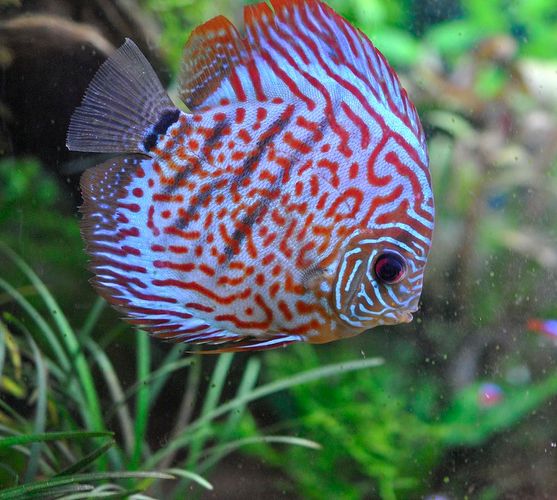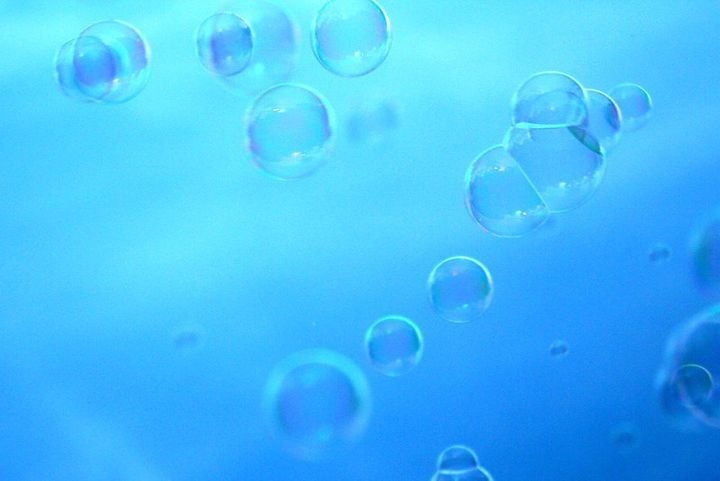Despite having gills, fish need oxygen in their water. They simply process the oxygen differently than we do.
Usually, if there is a problem with oxygen in the tank, it’s because there’s not enough. But, is it possible to have too much oxygen in a fish tank?
Is It Possible To Have Too Much Oxygen In A Fish Tank?
It’s rare for there to be too much oxygen in an aquarium, but it is possible. Unfortunately, having too much oxygen can be just as bad as not having enough.
How Much Oxygen Do Fish Need?
To determine if there is too much oxygen in your fish tank, you’ll need to know how much should be in your tank.
Generally, fish tanks should have a concentration of 6-8 mg/L of dissolved oxygen. Levels below 4 mg/L can cause illness and stress. Death comes at levels below 2 mg/L. Likewise, anything above 8 mg/L is dangerous and can cause illness and death.
Does The Size Of The Fish Matter?
In short, not really.
Bigger fish do tend to need more oxygen than smaller fish. BUT, smaller fish are usually much more active than larger fish, thus consuming more oxygen.
So, in the end, the amount of oxygen needed by large and small fish pretty much evens out.
What Happens If There’s Too Much Oxygen?

Having too much oxygen in a tank can be harmful and even deadly to an aquarium.
It Shocks The Biological Filter
For a fish tank to remain healthy, you must have colonies of biological bacteria. Beneficial bacteria help to break down fish waste. This prevents it from becoming toxic ammonia or nitrites.
Too much oxygen can shock and kill the beneficial bacteria in your tank. This can lead to dangerous spikes in ammonia, nitrites, or nitrates. If the water becomes toxic enough, it can cause mass death in your aquarium.
How To Measure How Much Oxygen Is In Your Tank
Now, you’re probably wondering how to measure the levels of oxygen in your tank. Luckily, this part is easy, you’ll just need to buy a portable oxygen meter.
Follow the directions to make sure the meter is calibrated properly. Then, place the meter inside the tank. It will read the oxygen levels and display them on the meter. Then, you can go about making adjustments if you need to.
Unfortunately, oxygen meters can be quite expensive. So, you may need to rely on visual signs to tell that your aquarium is getting too much oxygen.
What Are The Warning Signs?
There are some warning signs that may signal there is too much oxygen.
The most common signs are bubbles and foaming in the tank. A small amount of this is generally normal, but excess amounts are a problem.
Your fish will show you when there is too much oxygen in the tank, too. Their health will begin to decline.
Gas Bubble Disease
Gas bubble disease is a painful and devastating illness that can occur when there is too much oxygen.
Gas bubbles form in the blood vessels of the fins, gills, eyes, and organs. Smaller bubbles can combine into larger bubbles that block blood flow. This leads to tissue damage, and eventually, death.
It’s easy to tell if your fish has this disease. You can see bubbles forming along their skin and around their eyes. Their swim bladder will also overinflate, making it hard for them to swim. Their gills will begin to swell as well as their head.
Other Physical Signs
It’s best to determine over-oxygenation before your fish develops gas bubble disease. There are a few less serious symptoms that show your fish is getting too much oxygen. Some things you may notice include:
- Lethargy
- Overeating
- Erratic swimming
- Trouble breathing
- Skin lesions
Looking at this list, you probably know that other illnesses can cause the same symptoms. Your first step should be to measure the oxygen levels in your tank. If the levels are normal, then you can rule out over-oxygenation and move on to other scenarios.
How Do You Lower The Oxygen Levels?

So, you’ve measured the oxygen levels in your tank, and you’ve found that they’re too high. Now, what do you do?
Remove The Air Stones
If there’s too much oxygen in your tank, the first thing you should do is remove any air stones. Bubblers can be great for adding oxygen to a tank that needs it, but some tanks do better without them.
Removing any bubblers will reduce the surface agitation in your tank. This will also reduce the amount of gas exchange occurring and the amount of oxygen going into the water.
Reduce The Size Of The Filter
This may also be necessary if your tank is getting too much oxygen. Make sure the filter is the right size for the tank rather than using one that is too large.
Perform Less Water Changes
Be careful with this strategy. Fewer water changes mean your tank will become dirtier. So, you’ll need to closely watch your water parameters.
But, performing fewer or smaller water changes can reduce the amount of oxygen in the tank. Rather than removing 25% of the water with each water change, try removing just 10-15% instead.
Remove Live Plants
One of the best strategies for lowering the amount of oxygen is to remove live plants. Many tanks that become over-oxygenated do so because the plants have overgrown. By thinning out the number of plants in your aquarium, you will also reduce the amount of oxygen in the tank.
Add More Fish
This is another strategy that you must be careful with. If your fish are already struggling, you may cause more suffering by adding more. You also need to be careful not to add SO many fish that you overcrowd the tank.
Still, more fish will consume more oxygen. So, if you have too much oxygen in the tank, adding more fish may take care of the problem.
Conclusion
It’s rare, but it’s possible to have too much oxygen in your fish tank. Luckily, it’s much easier to fix an overabundance of oxygen than it is to fix a lack of oxygen.
If you have too much oxygen in your tank, your first step will be to remove any air stones and reduce the size of the filter. Begin performing fewer water changes. If those steps don’t work, you may need to remove some live plants, and even add more fish to the tank.

